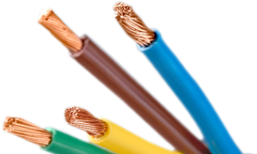
Conducting an energy audit of your home is an essential step toward reducing energy consumption, lowering utility bills, and contributing to a greener environment. An energy audit helps identify areas where your home is losing energy and suggests improvements to enhance efficiency. Here’s a step-by-step guide to conducting a thorough energy audit of your home.
1. Gather Your Tools
Before you begin, assemble the necessary tools for your audit:
- Notebook and Pen: To take notes and record observations.
- Flashlight: For inspecting dark areas like attics and basements.
- Thermometer: To measure temperature differences around the house.
- Smoke Pencil or Incense Stick: To detect air leaks.
- Utility Bills: To analyze your energy usage patterns.
2. Review Your Energy Bills
Start by examining your utility bills from the past year. Look for trends in energy consumption and identify any unusual spikes in usage. This will help you understand your energy usage patterns and pinpoint areas that need attention.
Steps:
- Compare Seasonal Usage: Note any significant changes between seasons.
- Identify High Usage Periods: Look for months with unusually high energy consumption.
3. Inspect Insulation
Proper insulation is crucial for maintaining a consistent indoor temperature and reducing energy loss.
Steps:
- Attic Insulation: Check if your attic is well-insulated. Insulation should be evenly distributed without gaps or compression.
- Wall Insulation: If possible, check for insulation in exterior walls. This might require removing outlet covers or drilling small holes.
- Floor and Basement Insulation: Ensure that floors, basements, and crawl spaces are adequately insulated.
4. Check for Air Leaks
Air leaks can significantly reduce your home’s energy efficiency by letting in cold air in winter and hot air in summer.
Steps:
- Doors and Windows: Check for drafts around doors and windows using a smoke pencil or incense stick. If the smoke wavers, you have a leak.
- Electrical Outlets: Inspect outlets on exterior walls for drafts. Install outlet gaskets if necessary.
- Baseboards and Attic Hatches: Look for gaps and cracks and seal them with caulk or weatherstripping.
5. Examine Heating and Cooling Systems
Your HVAC system is a major contributor to energy usage. Ensure it is running efficiently.
Steps:
- Filters: Check and replace HVAC filters regularly.
- Ductwork: Inspect ductwork for leaks and ensure it is properly sealed and insulated.
- Maintenance: Schedule regular maintenance for your heating and cooling systems to ensure they operate efficiently.
6. Evaluate Lighting
Lighting accounts for a significant portion of your energy bill. Switching to energy-efficient lighting can yield substantial savings.
Steps:
- Bulb Type: Replace incandescent bulbs with LED or CFL bulbs.
- Usage: Ensure lights are turned off when not in use. Consider installing motion sensors or timers.
7. Assess Appliances and Electronics
Older appliances and electronics can be energy hogs. Assess the efficiency of your current devices.
Steps:
- Energy Star Ratings: Check if your appliances are Energy Star certified.
- Usage Patterns: Unplug devices when not in use and use power strips to easily turn off multiple devices at once.
8. Analyze Water Heating
Water heating is another significant energy expense. Ensure your water heater is efficient.
Steps:
- Temperature Setting: Set your water heater to 120°F (49°C) to save energy.
- Insulation: Insulate your water heater and pipes to reduce heat loss.
- Usage: Consider installing low-flow showerheads and faucets to reduce hot water consumption.
9. Professional Help
While a DIY energy audit can uncover many issues, consider hiring a professional energy auditor for a comprehensive assessment. Professionals use specialized tools and techniques to provide a detailed analysis and recommendations.
Conclusion
Conducting an energy audit of your home is a proactive step toward energy efficiency and cost savings. By systematically reviewing insulation, checking for air leaks, inspecting heating and cooling systems, evaluating lighting and appliances, and considering water heating, you can identify and address areas of energy loss. Implementing the necessary improvements will lead to a more comfortable, efficient, and environmentally friendly home.
For more energy-saving tips and professional assistance, contact Empire State Electrical. We are here to help you achieve optimal energy efficiency in your home.


